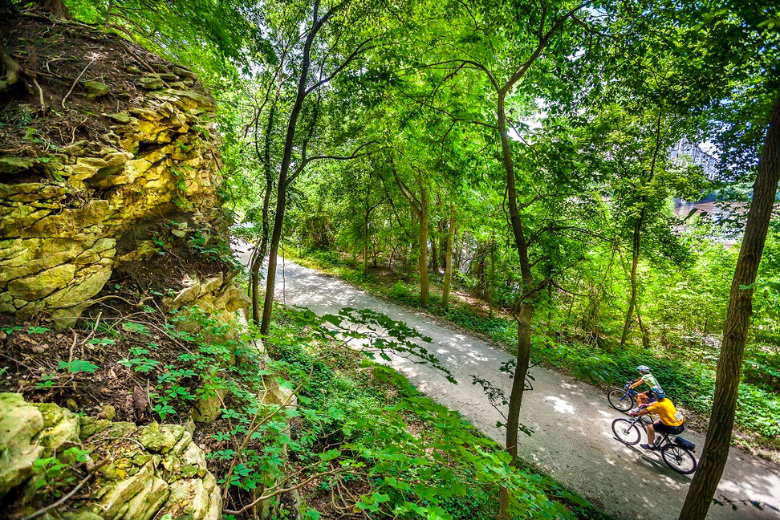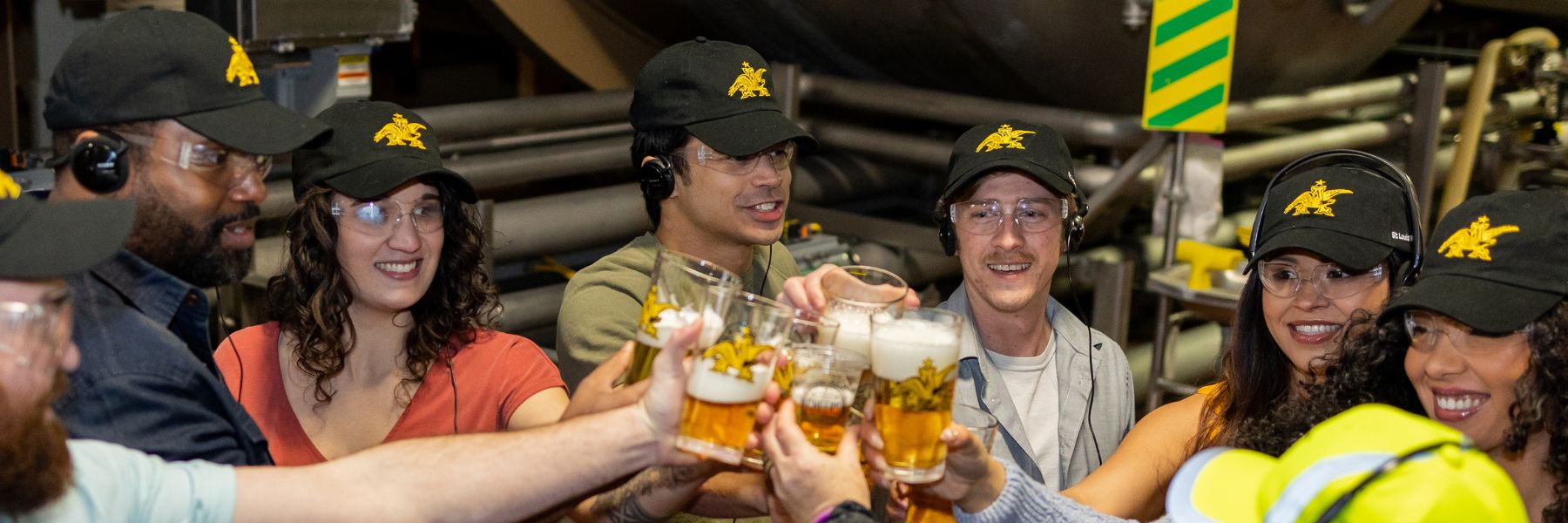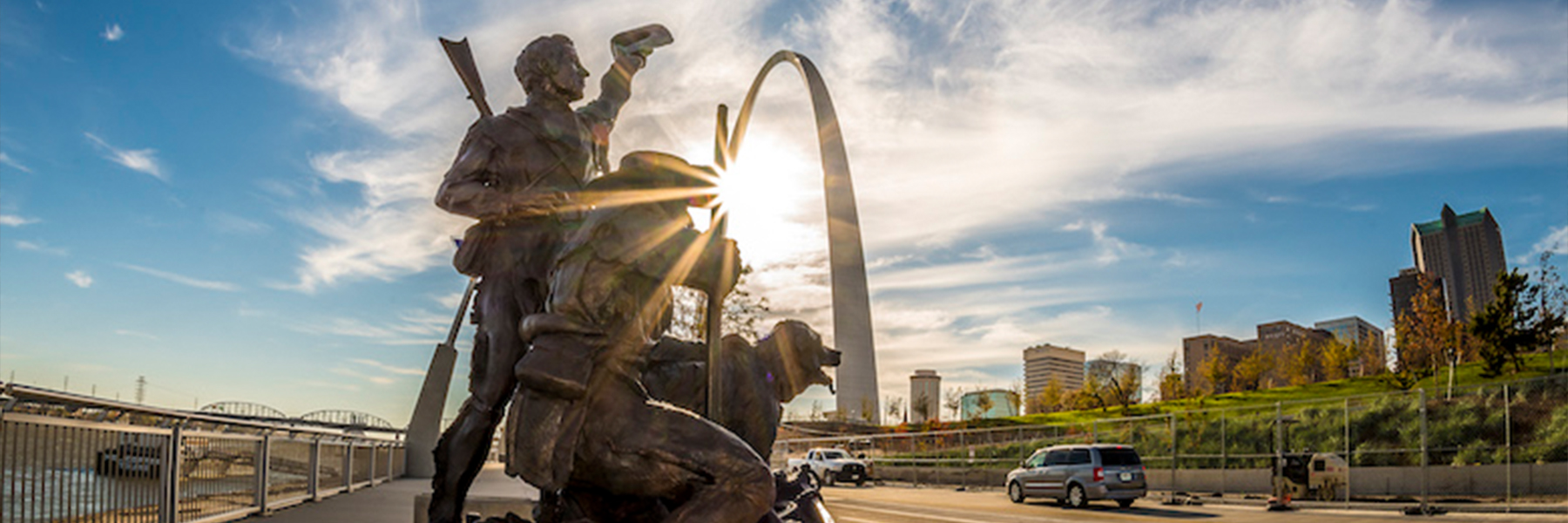
Lewis & Clark Adventure
Have a Lewis & Clark Adventure in St. Louis. The Lewis & Clark expedition (1804-1806) is credited with opening the American West. Modern day explorers can follow in the footsteps of the legendary explorers by visiting the historic sites found in St. Louis – the largest city along the Lewis & Clark Trail.
1. The Gateway Arch
Start your trip at the site where America’s monumental journey of exploration began – the Gateway Arch. The tram ride to the top of the Arch ends with a spectacular view from 630 feet high above the Mississippi River. Beneath the Arch, at the Museum of Westward Expansion, visitors can “meet” the animatronic figure of explorer William Clark, view murals of scenes of Lewis & Clark’s journey and read excerpts from Lewis’ journal. The Odyssey Theatre presents the National Geographic film “Lewis & Clark: Great Journey West,” which takes movie-goers back 200 years to experience the explorers’ journey through the danger and beauty of the unmapped West.
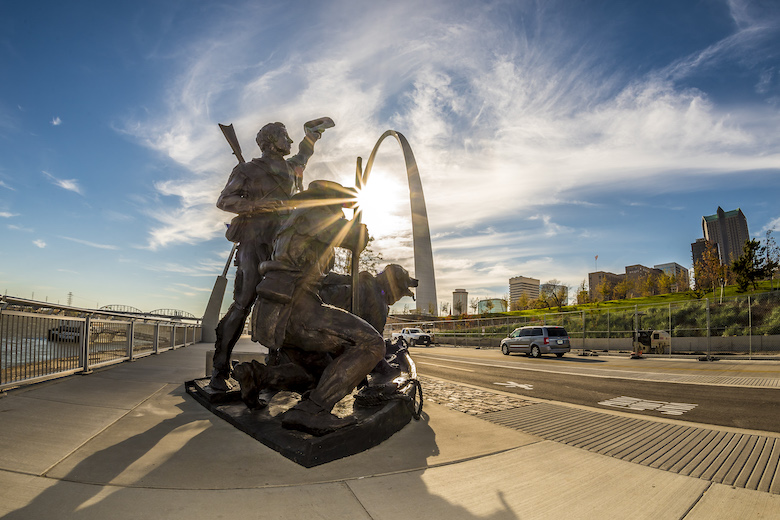
2. Missouri History Museum
See William Clark’s journal, clothing and other artifacts of the expedition from an extensive Lewis & Clark collection at the Missouri History Museum. The museum also features items from Clark’s St. Louis office or “council room” where he performed his duties as a federal Indian agent. On view is the original Louisiana Purchase Transfer Document that formalized the transfer of the Upper Louisiana Territory from Spain to France to the United States, March 9-10, 1804.
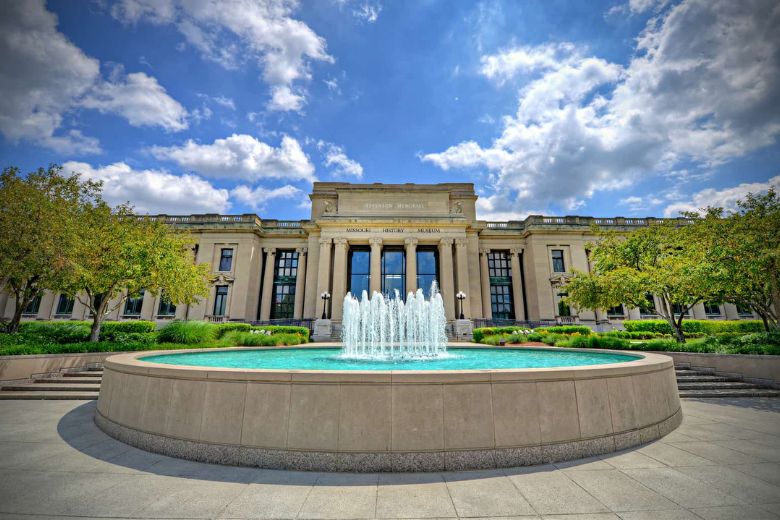
3. Bellefontaine Cemetery
Visit the grave of William Clark in Bellefontaine Cemetery. An elaborate granite obelisk and bust of the explorer mark his final resting place, which faces the confluence of the Mississippi and Missouri Rivers. The cemetery is open daily; maps to the gravesite are available from the cemetery office. At neighboring Calvary Cemetery, see the gravesite and monument to four Native Americans who met and aided Lewis, Clark and the Corps of Discovery during the expedition. Known as the “St. Louis Warriors” – Black Eagle, Man-of-the-Morning/Speaking Eagle, No-Horns-on-His-Head and Rabbit-Skin-Leggings – were members of the Nez Perce tribe.
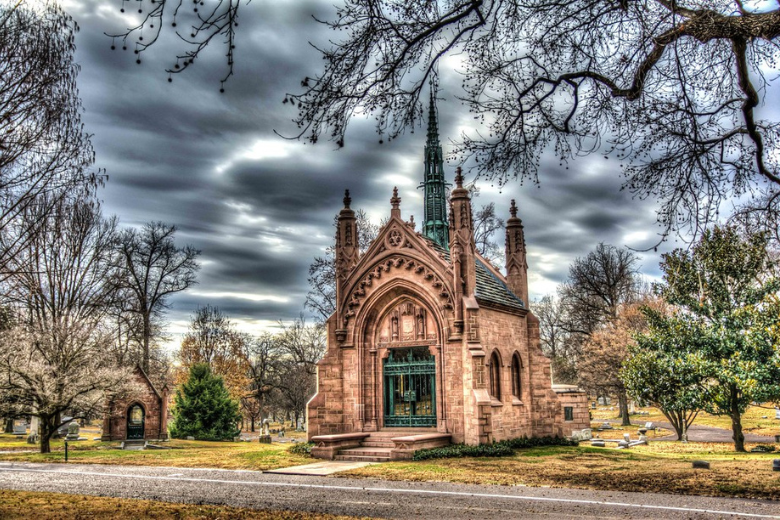
4. Fort Belle Fontaine
Before their triumphant return to St. Louis, Lewis, Clark and the corps members spent the final night of their return voyage at Fort Belle Fontaine, the first U.S. military fort west of the Mississippi. Interpretive markers, set high on a bluff that provides spectacular views of the Missouri River at Fort Belle Fontaine County Park (30 min.), describe the events of the explorers’ stay.
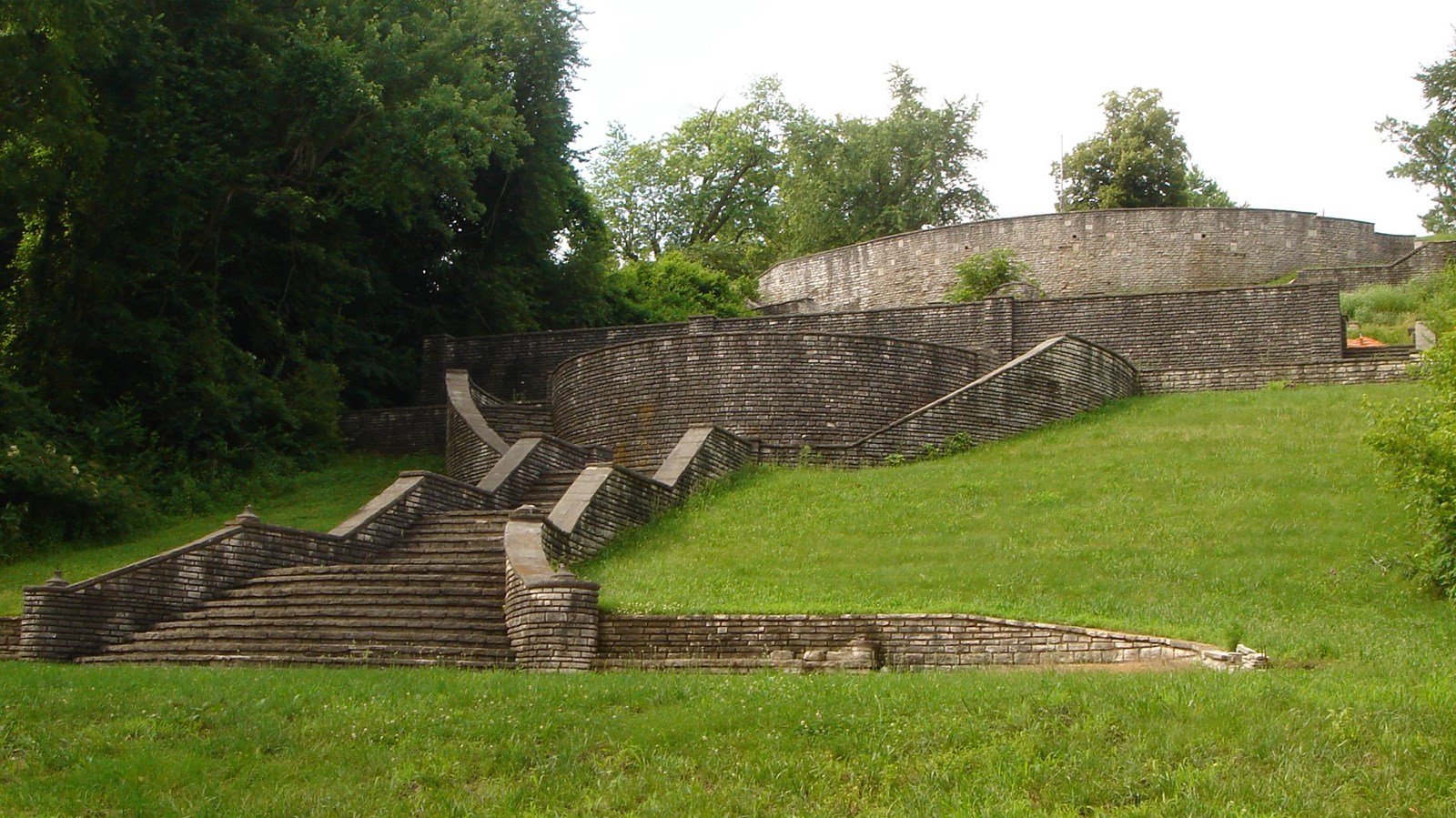
5. The Lewis & Clark State Historic Site
In nearby Hartford, Illinois, was the site of Lewis & Clark’s Camp Dubois winter campground. A film introduces visitors to the camp and describes the preparations for the trip made by the Corps of Discovery. A highlight is a full-sized replica of the 55-foot-long keelboat Lewis & Clark used to explore the Missouri River. Behind the site, along the banks of the Mississippi River, groups can see the confluence of the nation’s two great rivers – the Mississippi and Missouri – that provided Lewis & Clark their watery highway to the West. A monument comprised of eleven stone pillars, one for each state the explorers passed through on their trek to the Pacific, marks the site.
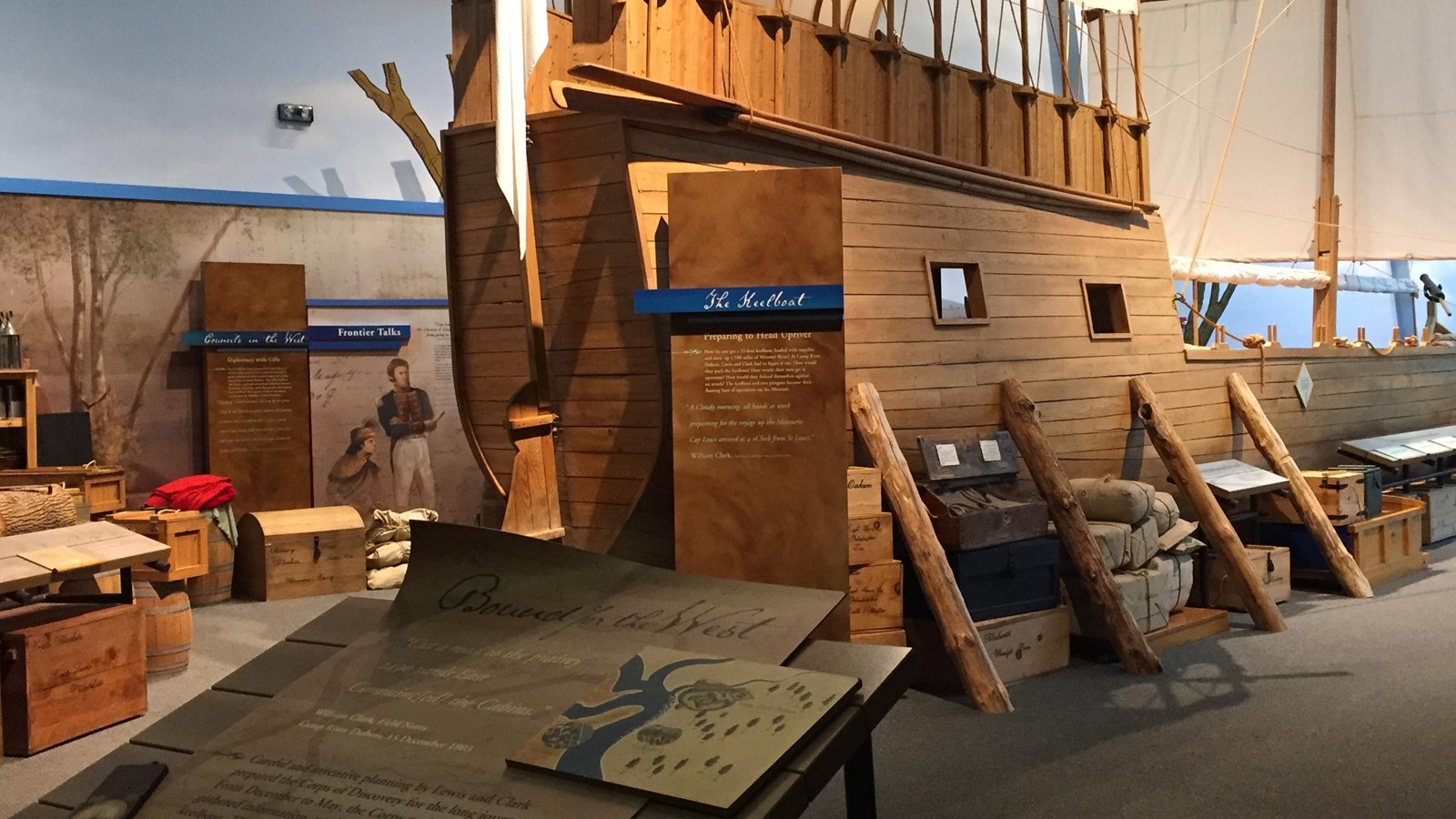
6. Cahokia Courthouse
While on the Illinois side of the Mississippi, visit the Cahokia Courthouse. Constructed in 1740, it is the oldest standing building that was part of the United States government during the period when Lewis & Clark were in the region, and an excellent example of Colonial French log construction known as poteaux-sur-solle. The courthouse was where Clark received and sent correspondence from Thomas Jefferson and where he and Lewis met with territorial leaders.
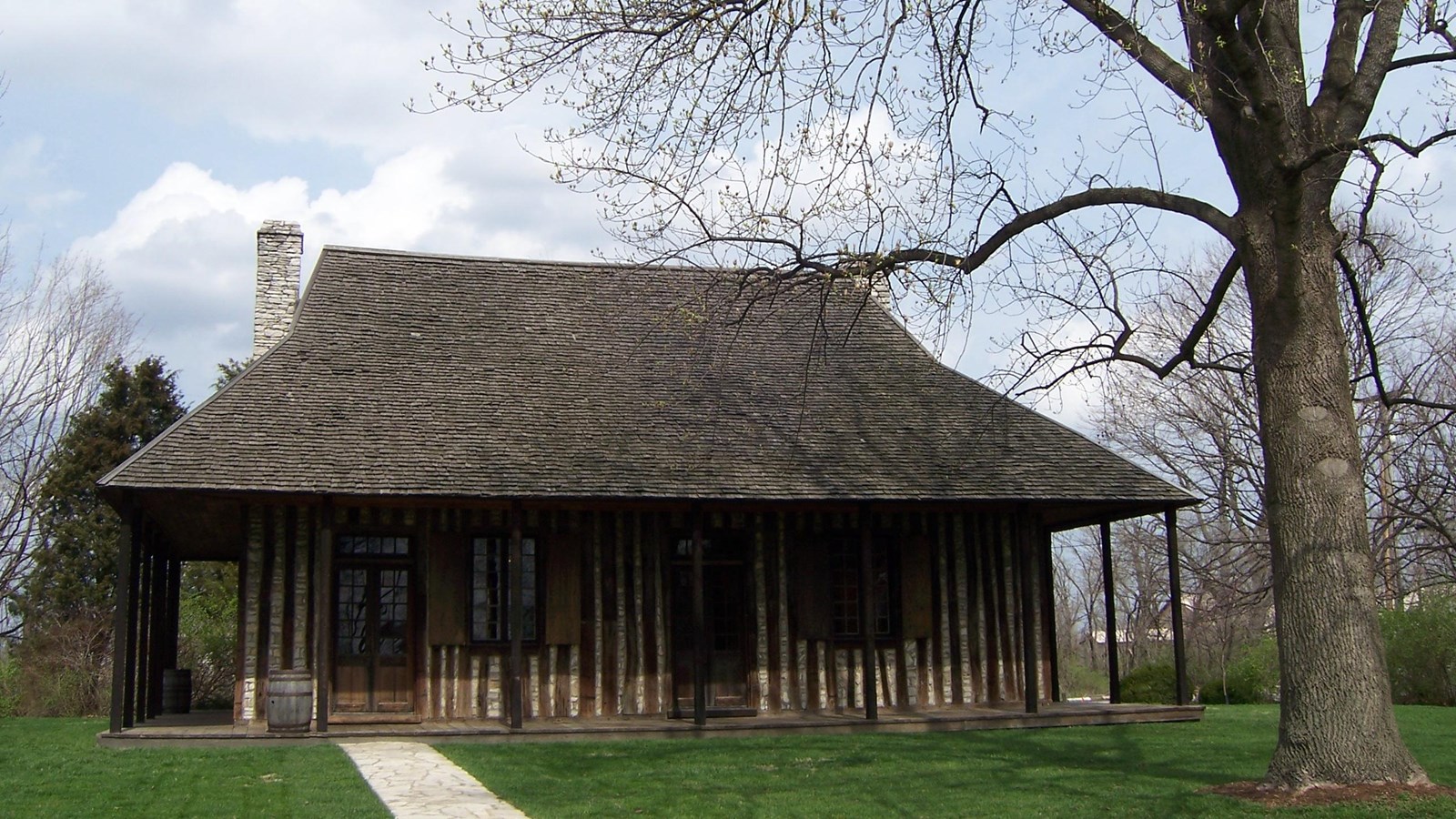
7. Cahokia Mounds Historic Site
In his journals, William Clark referenced the many Indian burial mounds that filled the landscape around St. Louis. Today you can take a trip 1,300 years back in time to visit Cahokia Mounds Historic Site. This United Nations World Heritage archeological site, once home to more than 20,000 people, contains the remains of the largest pre-Columbian city north of Mexico. View interactive exhibits and archaeological artifacts highlighting the way of life of these ancient “St. Louisans.”
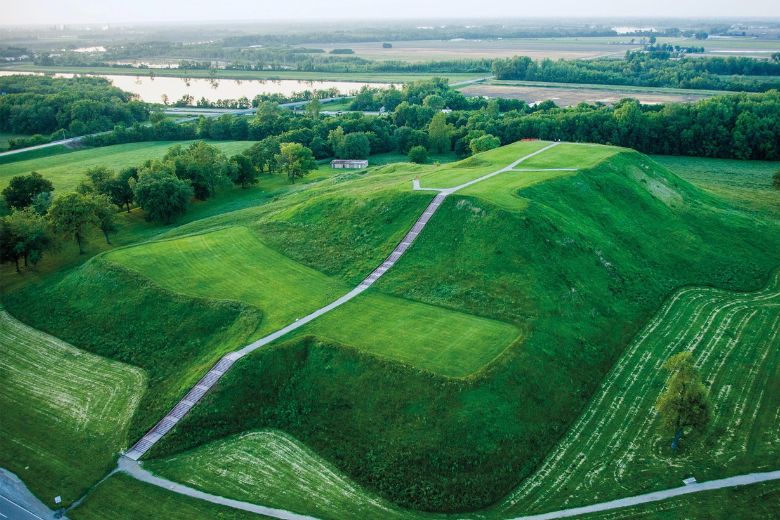
8. The Lewis and Clark Boat House and Nature Center
St. Louis’ neighboring community of St. Charles, Missouri served as the expedition’s first campsite along the Missouri River during May, 1804. The Lewis and Clark Boat House and Nature Center is home to three replicas of the boats used by the Corps of Discovery, and exhibits about the Missouri River and the Corps’ time in St. Charles. Each May, St. Charles holds the Lewis and Clark Rendezvous, a re-enactment of the encampment, replete with historically accurate costumed participants, black powder rifle shoots and other frontier craft demonstrations.
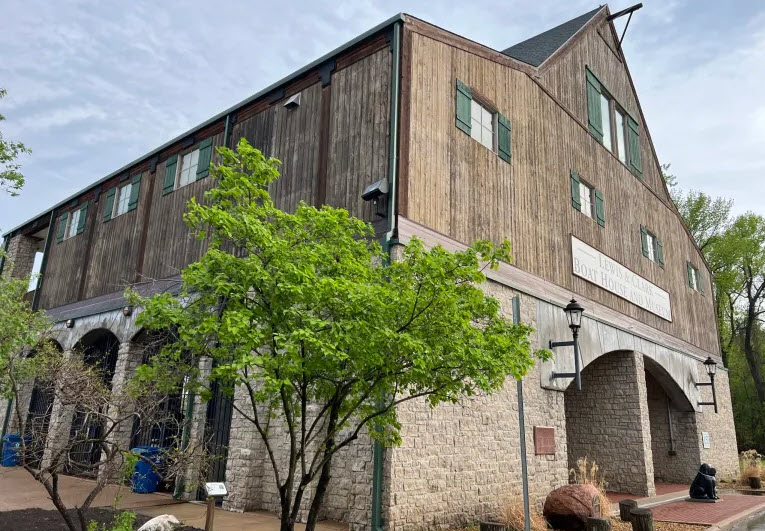
9. Katy Trail
Hike or bike along 165-miles of the Lewis & Clark Trail via the Katy Trail (www.mostateparks.com/katytrail.htm) (1-8 hrs.), a former railroad right-of-way turned bike path that winds its way from St. Charles through the scenic Missouri Wine Country. The explorers’ journals mention that they passed by famed frontiersman Daniel Boone’s homestead, and your group can visit the Daniel Boone Home and Boonesfield Village (www.lindenwood.edu/boone) (1-2 hrs.), a settlement of early-1800s buildings located near Augusta, Missouri. The village is open from March through November.
